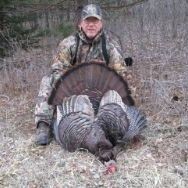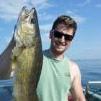-
Similar Content
-

-

-

-

-
 0
0By Arms and outdoors
Started -

-

-

-

-

-
-
Your Responses - Share & Have Fun :)
-

By Wanderer · Posted
On waterfowling pages that Stoeger M3000 gets mentioned a lot. The Cerakote finish is sweet too. -

By monstermoose78 · Posted
I really like it. I do like the gas operated semis as they reduce recoil -

By leech~~ · Posted
Thanks, never had an Auto. Kind of looking. 👍 -

By monstermoose78 · Posted
Stoeger M3000 -

By leech~~ · Posted
Always a good day out of the house. Hey moose, what kind of gun do you have a few grouse pictures back? -

By monstermoose78 · Posted
Flushed 3 pheasants today with Hazel but they were flushing 50 yards a head of her. Then we went by some little berries that looked black and hazels tail started going a brown bird gets up I thought hen then the bird banked and it was a grouse. It was good to get her out in the woods. I seen a few pheasants in picked corn fields. -

By Kettle · Posted
Walked today and yesterday, flushed 9, shot at two and got two. Hopefully next year I'll have a dog to hunt with. Still warm up here, skim of ice on ponds. Weather has been nice. Hopefully walk a bit more the next few weeks. Been pretty cautious walking for birds to not interfere with deer hunters. There sure are not the deer hunters there used to be -
.thumb.jpg.5c1a86e9339e49e53f5bfefed2220054.jpg)
By LakeofthewoodsMN · Posted
On the South Shore... The focus for many this week is the ongoing deer hunting season which is a big tradition in these parts, even for avid walleye anglers. There were some that either already harvested their deer or are more into catching fall walleyes than hunting. Those that are fishing are taking advantage of the unseasonably warm weather and excellent walleye and sauger bite that is happening across the lake. Cold weather is in the forecast in the upcoming days and weeks so that is also getting many excited. The best depths on the south end of LOW are 22-28 feet of water. Vertical jigging with frozen emerald shiners is catching most of the walleyes, saugers and jumbo perch. Depending upon where on the lake you are fishing, some slots and big trophies are in the mix as well, but most reports are talking about good numbers of eaters. Jumbo perch are coming in good numbers this fall which will serve ice anglers well. Watch out for an occasional pike or even lake sturgeon mixed in with the walleyes. There are good numbers of walleyes and saugers across the south shore which is setting up nicely for early ice. On the Rainy River... There continues to be good numbers of shiners in the river, and consequently, there are good walleyes in the river as well. Walleyes along with saugers, pike and some sturgeon are coming in up and down the river. Most walleyes are being caught in 10-25 feet of water in various stretches of the river. Jigging with live or frozen emerald shiners is the key. Some anglers are also still slow trolling crankbaits upstream to cover more ground and find fish. Both methods are producing solid results. Sturgeon fishing remains strong. The catch-and-release sturgeon fishing is open into the spring when it changes to the "keep season" on April 24th. Up at the NW Angle... As temps are getting colder, most are in the woods hunting and not fall fishing, however, for those who bundle up, fishing continues to be excellent. A nice mixed bag with walleyes, saugers, perch, pike and crappies being caught. Very good muskie fishing with the colder water temps and shorter days. Some big fish and some good numbers are being caught amongst the islands. Both casting and trolling is getting it done. -

By gimruis · Posted
I hunt in the rifle zone so I don't have a need to use a shotgun to hunt deer, but I would be looking at this if there was ever a need to. There could be state legislation introduced next summer that eliminates the shotgun zone completely. It has bipartisan support. Wisconsin removed theirs years ago and MN is usually later to follow. They've tried to pass it more than once and it came up just short both times. Probably just a matter of time. -

-


Recommended Posts
Join the conversation
You can post now and register later. If you have an account, sign in now to post with your account.
Note: Your post will require moderator approval before it will be visible.